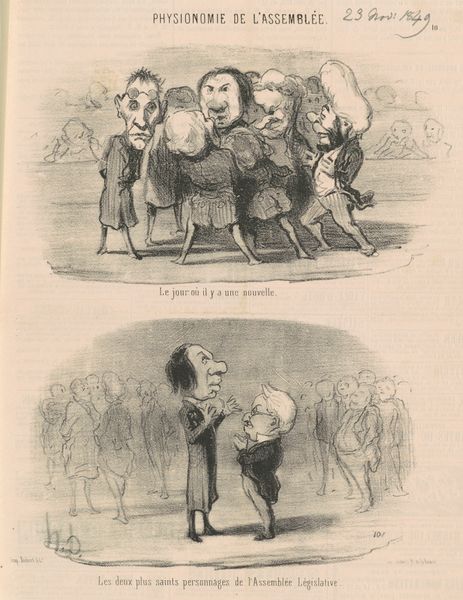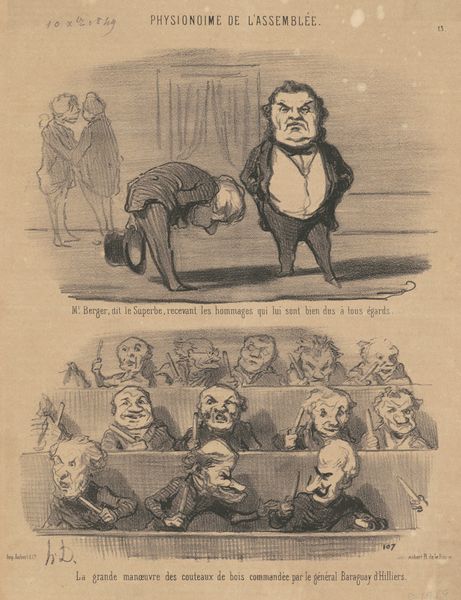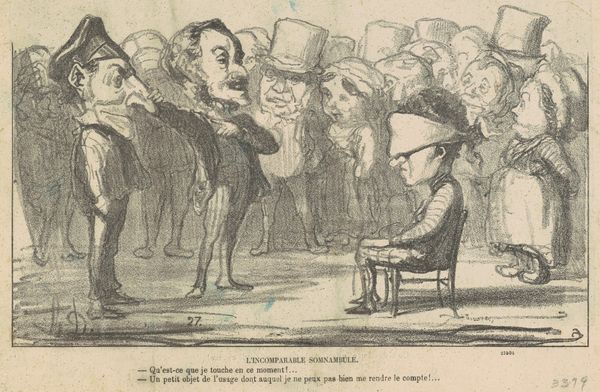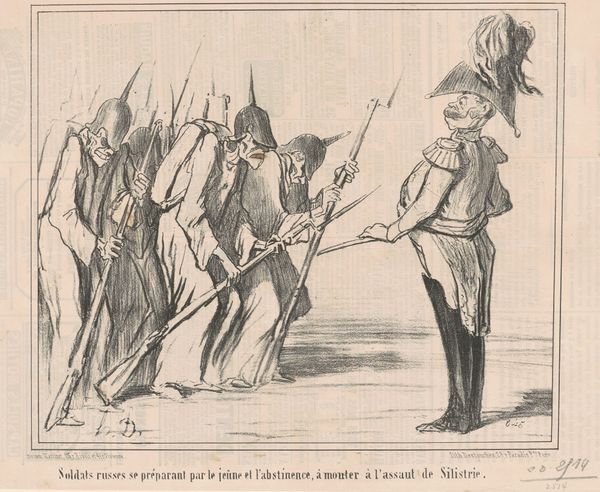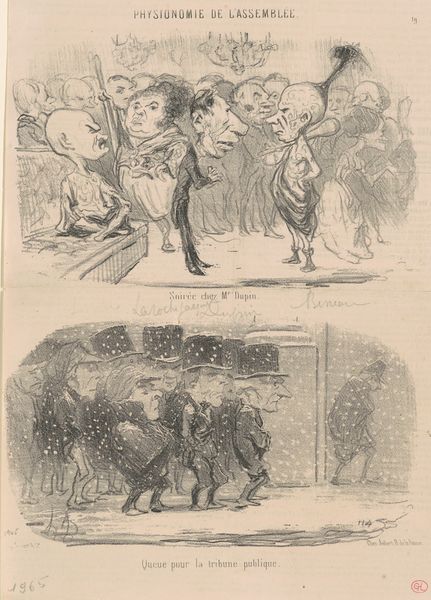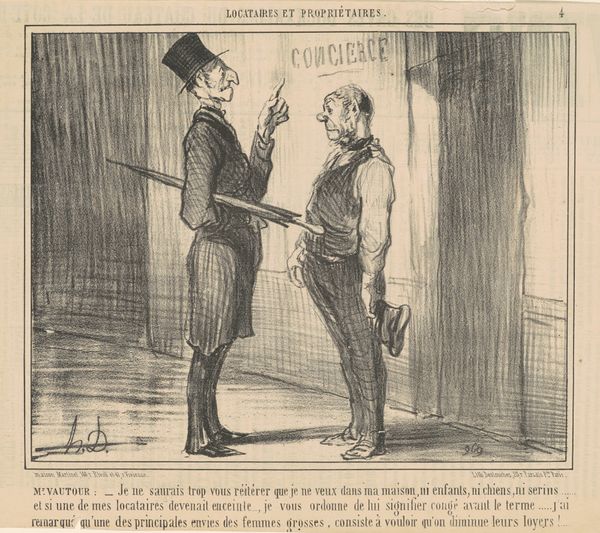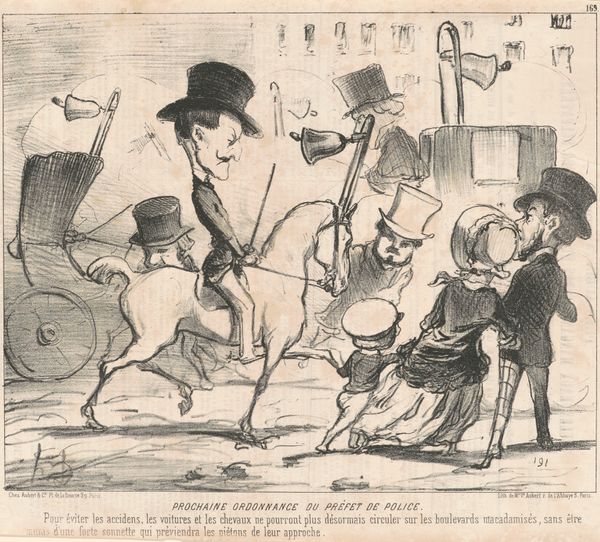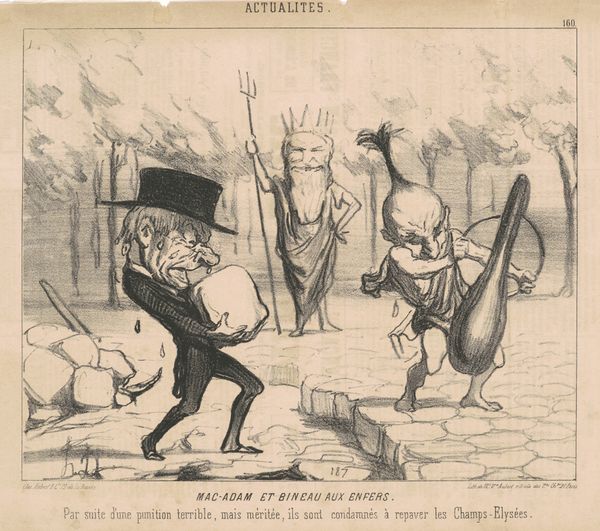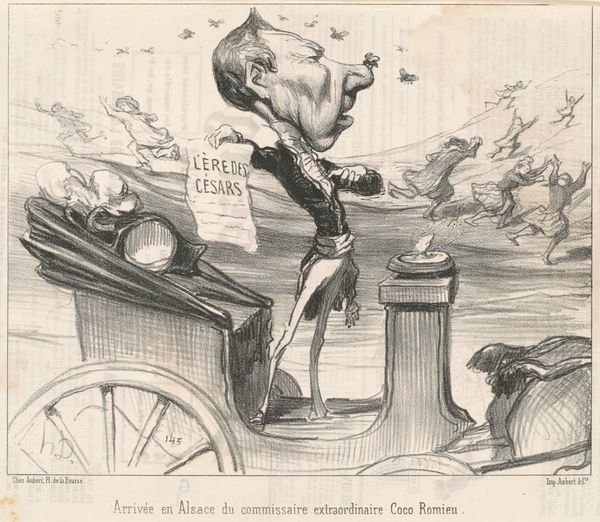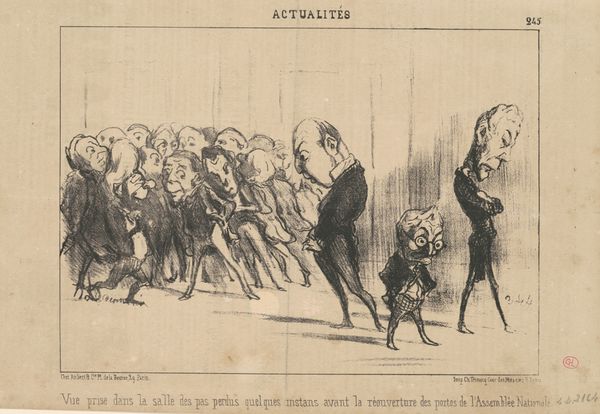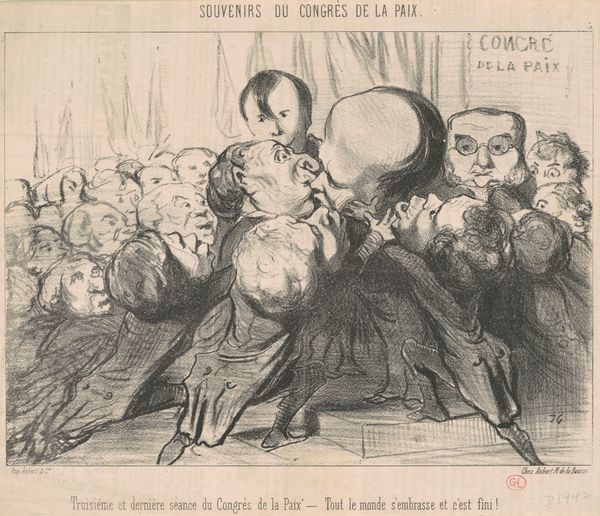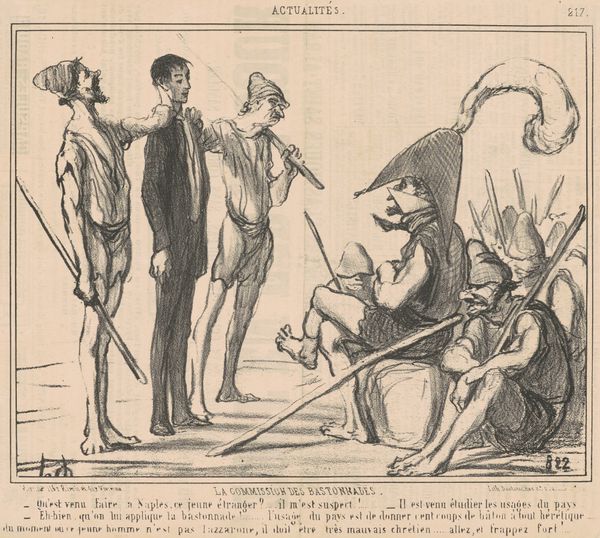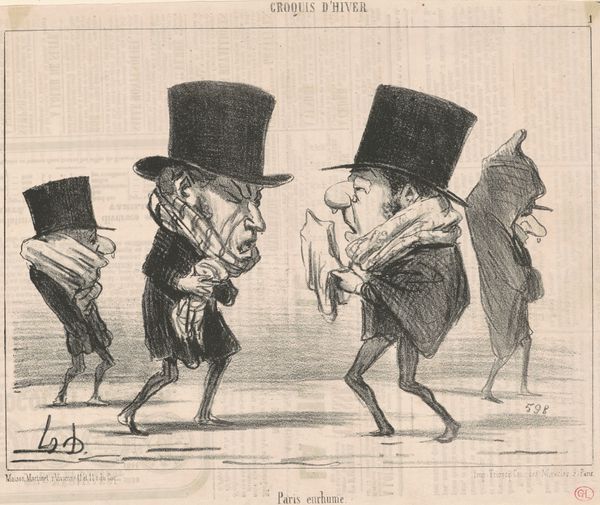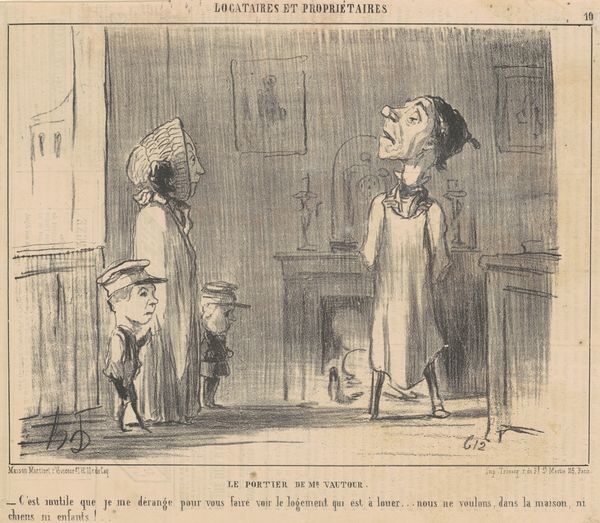
drawing, lithograph, print, ink, graphite
#
drawing
#
lithograph
# print
#
caricature
#
ink
#
group-portraits
#
romanticism
#
graphite
Copyright: National Gallery of Art: CC0 1.0
Curator: Allow me to introduce you to Honoré Daumier's lithograph, "Ayant terminé leurs travaux...", which translates to "Having completed their work...". This print likely dates to the mid-19th century. Editor: It has an immediate unsettling yet comical feeling. The exaggerated features, particularly the enlarged heads and spindly legs, give the figures a distorted appearance, and the grey hues only deepen the bizarre affect. Curator: Exactly! Daumier was a master of caricature. Observe how he uses line and shadow to emphasize the physical and, dare I say, intellectual pretenses of his subjects. Note, also, how the composition leads the eye through the crowd, yet the three figures in the foreground dominate. It’s a brilliant play of forms. Editor: And a cutting social commentary. It clearly satirizes the self-importance of political figures, those who claim to have brought "peace to the world". Curator: Indeed. The setting suggests a formal gathering, possibly a peace congress. Notice how their triumphal yet pacific procession, as the caption declares, contrasts sharply with their almost grotesque depiction. What does that visual contradiction tell us about power, authority, and, indeed, the artist's opinion on their pronouncements? Editor: That power, especially when inflated by ego, can be ridiculous. The choice of lithography, a medium easily mass-produced, made this accessible to a wider audience, amplifying its impact in shaping public opinion about the so-called Congress members. I think Daumier deliberately uses the visual language to make us question those in power, their intentions and above all their self-serving narratives. Curator: Yes, precisely, that intersection of aesthetic technique and political critique solidifies its power. Daumier gives tangible form to intangible social critique. It speaks of Romanticism's interest in the relationship between image, emotion, and sociopolitical meaning. Editor: Agreed, and looking at this lithograph from an historical point of view, you grasp at just how the artwork transcends mere portraiture, giving us a powerful snapshot into the dynamics of power and satire of the period. Curator: In its very construction and form it becomes the embodiment of critique. Editor: Leaving us with questions that continue to resonate in society today.
Comments
No comments
Be the first to comment and join the conversation on the ultimate creative platform.
